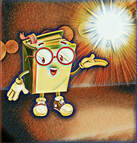YouTube Channels that are "for entertainment purposes only" but sadly many of them claim to be "real" paranormal investigations.
The channels included on this listing were suggested to Ledicarus Media by legitimate Paranormal Debunking YouTubers.
The channels included on this listing were suggested to Ledicarus Media by legitimate Paranormal Debunking YouTubers.
Debunking the Paranormal, article written by Kevin M. Klerks, Paranormal Investigator & Researcher, 2022.
Favourite Debunking & Reaction YouTube Channels.

